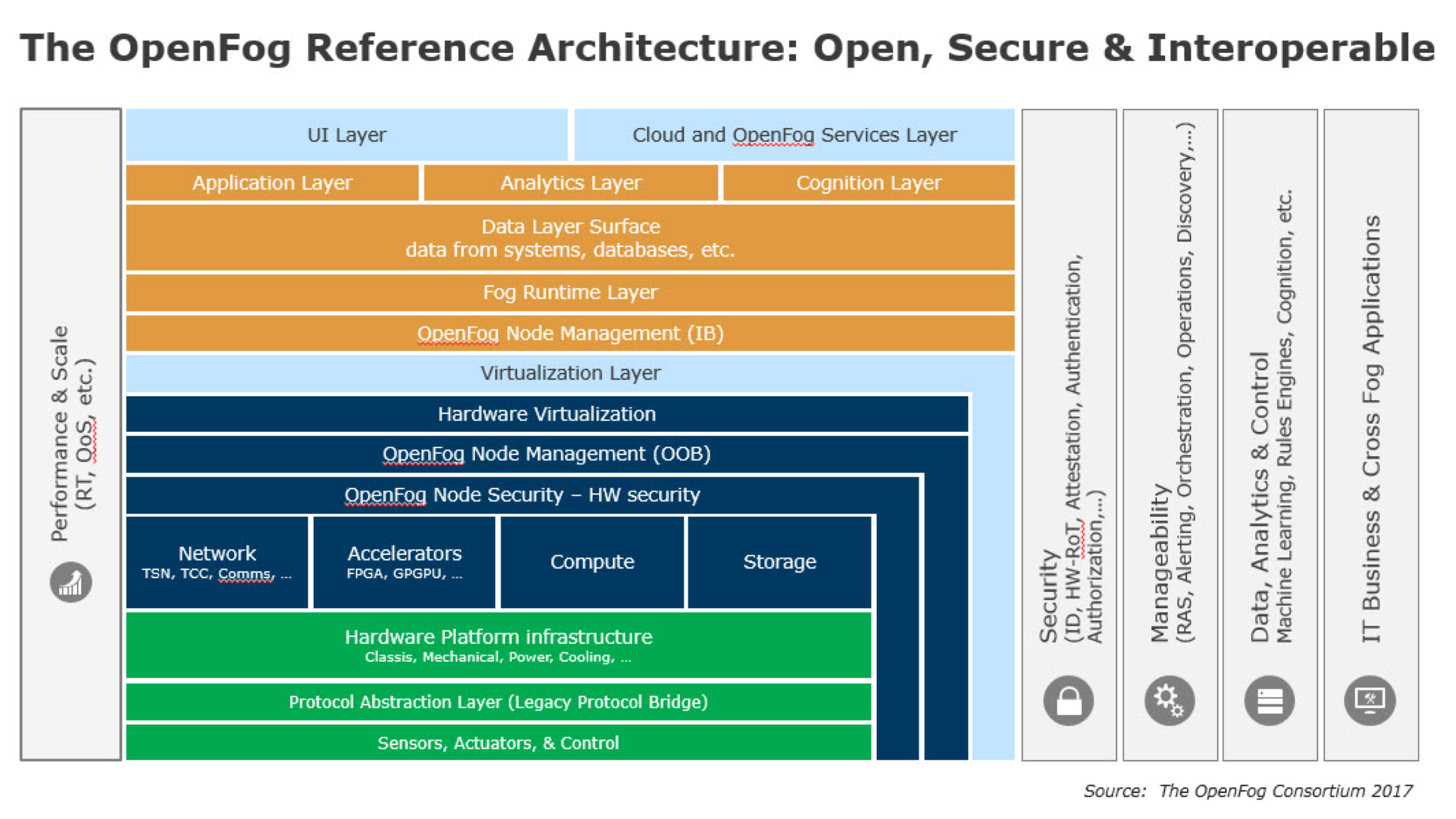Difference between revisions of "Fog Computing"
ArvindIOTF (talk | contribs) m (→Open Fog Consortium) |
(→See Also) |
||
| Line 21: | Line 21: | ||
== See Also == | == See Also == | ||
*[[UsersWiki!:Architecture | IoT Architecture]] | *[[UsersWiki!:Architecture | IoT Architecture]] | ||
| + | *[http://ieeexplore.ieee.org/document/6932989/ The Fog computing paradigm: Scenarios and security issues] | ||
*[https://www.linkedin.com/pulse/why-iot-needs-fog-computing-ahmed-banafa/ Why IoT needs Fog Computing] | *[https://www.linkedin.com/pulse/why-iot-needs-fog-computing-ahmed-banafa/ Why IoT needs Fog Computing] | ||
Revision as of 14:04, 10 December 2017
Fog computing was coined by CISCO and envisages multiple compute points in an IOT network. Instead of the cloud being the sole compute engine gateways and other network infrastructure may have the resources ( being full fledged Linux devices) to pre process the data before sending to back end applications or sometime even processing it locally. Fog is different from the old Distributed Computing in the sense that many different compute engines of different capacity collaborate in near real time ( multiple gateway, On premise and cloud ). A common usage is in network surveillance and malware detection
Edge computing by contrast implies only one local compute point (the gateway) and no usage of cloud or on premises resources
Open Fog Consortium
- OpenFog Consortium
Fog computing is a system-level horizontal architecture that distributes resources and services of computing, storage, control and networking anywhere along the continuum from Cloud to Things. It is a:
- Horizontal architecture: Support multiple industry verticals and application domains, delivering intelligence and services to users and business
- Cloud-to-Thing continuum of services: Enable services and applications to be distributed closer to Things, and anywhere along the continuum between Cloud and Things
- System-level: Extend from the Things, over the network edges, through the Cloud, and across multiple protocol layers – not just radio systems, not just a specific protocol layer, not just at one part of an end-to-end system, but a system spanning between the Things and the Cloud

